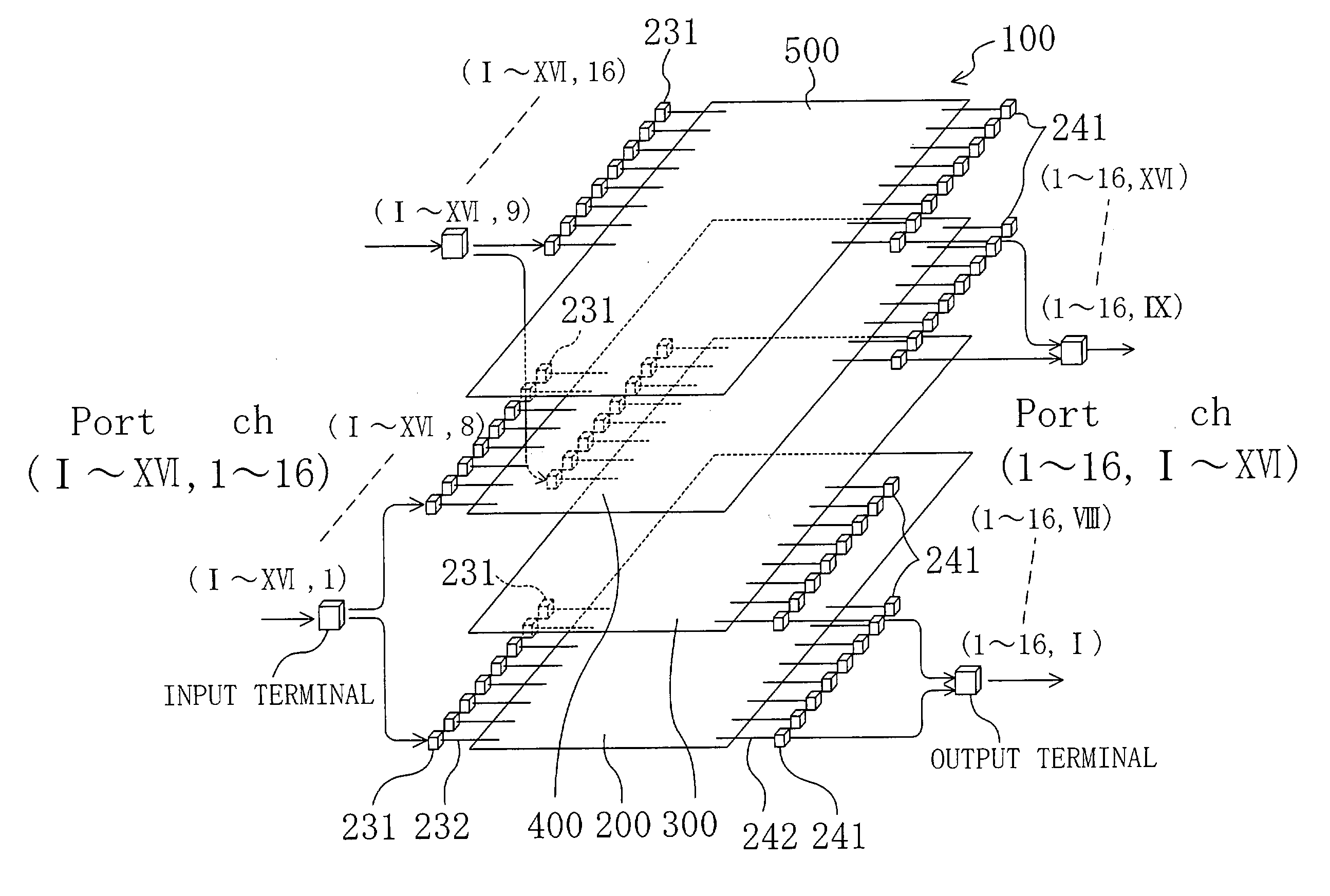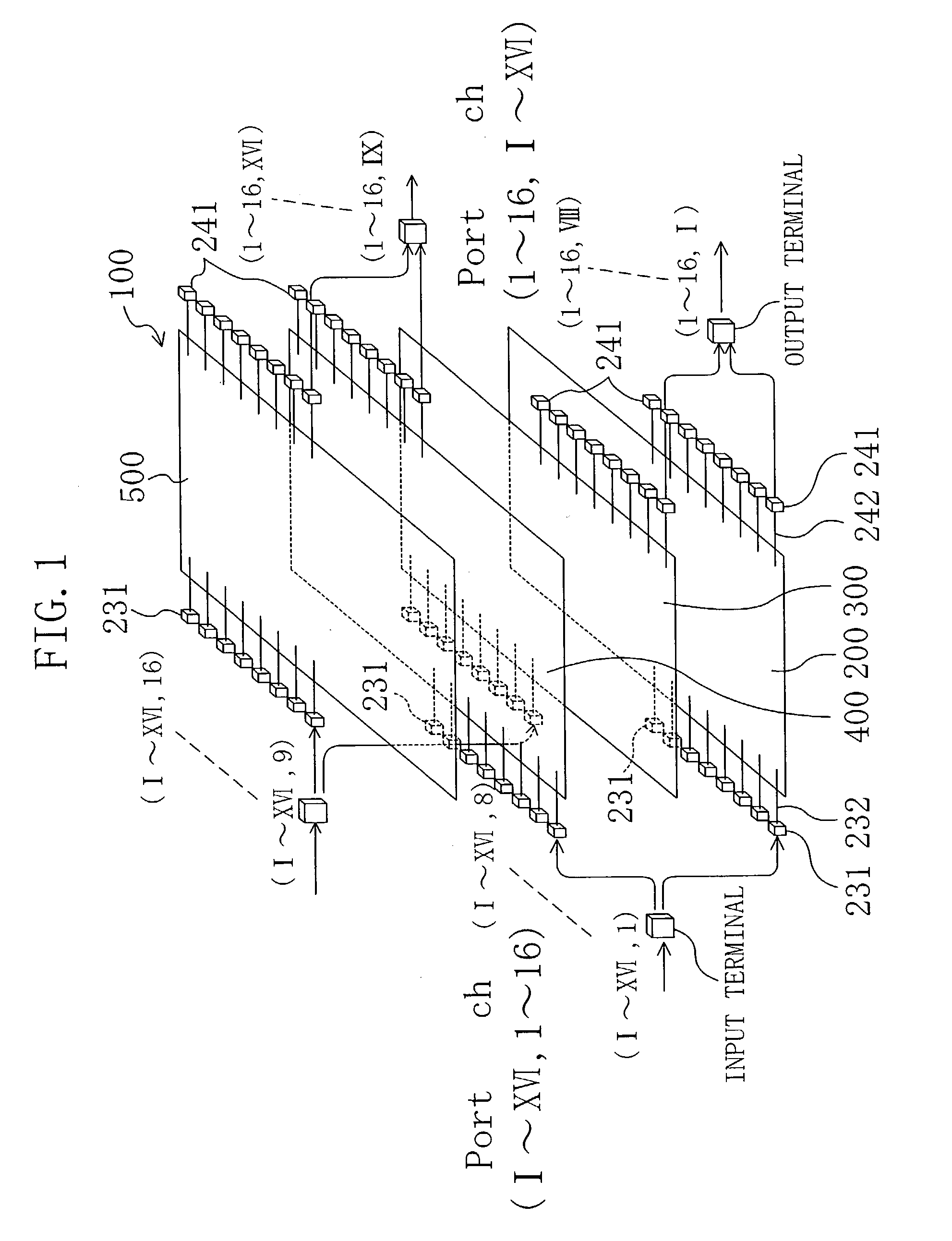Optical fiber and optical fiber wiring board using the optical fiber
- Summary
- Abstract
- Description
- Claims
- Application Information
AI Technical Summary
Benefits of technology
Problems solved by technology
Method used
Image
Examples
Embodiment Construction
[0046] FIG. 1 shows an example of an optical matrix conversion wiring board 100 according to an embodiment of the present invention. The optical matrix conversion wiring board is an optical-fiber wiring board that converts inputs of m ports and n channels (hereinafter, referred to as "(m, n) inputs". It is noted that the letters "m" and "n" each represents a natural number) into outputs of n ports and m channels (hereinafter, referred to as "(n, m) outputs"). The optical matrix conversion wiring board 100 (hereinafter, referred to as an m.times.n optical matrix conversion wiring board) has advantages in that a number of optical fibers are arranged in units of a channel, thereby preventing erroneous wiring, and in that the optical fibers are routed on a plane, whereby a reduced storage area suffices for installation.
[0047] The optical matrix conversion wiring board 100 shown in FIG. 1 includes 16 input terminals and 16 output terminals, and it is constructed to be a 16.times.16 optic...
PUM
 Login to View More
Login to View More Abstract
Description
Claims
Application Information
 Login to View More
Login to View More - R&D
- Intellectual Property
- Life Sciences
- Materials
- Tech Scout
- Unparalleled Data Quality
- Higher Quality Content
- 60% Fewer Hallucinations
Browse by: Latest US Patents, China's latest patents, Technical Efficacy Thesaurus, Application Domain, Technology Topic, Popular Technical Reports.
© 2025 PatSnap. All rights reserved.Legal|Privacy policy|Modern Slavery Act Transparency Statement|Sitemap|About US| Contact US: help@patsnap.com



